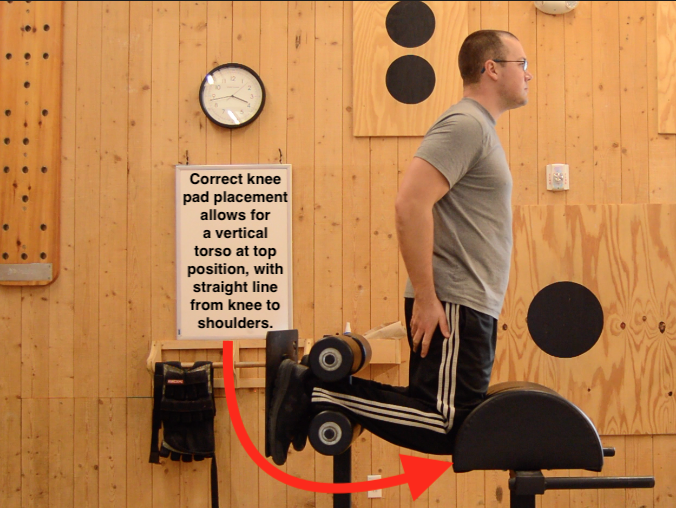Move of the Month: The Glute-Ham Raise
by GRP strength coach Will Ruth
It’s bulky, fairly uncommon in a conventional gym, and really only does one thing well, but the glute-ham raise (GHR) is worth knowing if you have the access to the machine and the strength to to use it. Correctly performed, the GHR is one of the best ways to strengthen the posterior chain muscles of the hamstrings, glutes, and back. I use it with all the GRP teams’ strength training, and it has been challenging and effective in their physical development.
The unassisted GHR is an advanced exercise, so my expectation is that most, if not all, athletes will need a progression to get there. All of the GRP athletes started out with the ground-based Nordic hamstring curl (NHC) first before progressing to the GHR. These exercises both emphasize hamstring muscle action through knee flexion. The hamstrings are a two-joint muscle, acting both to flex the knee and extend the hip. Sculling, rowing, erging, skiing, and running all mostly use the hamstrings through hip extension, so hamstring strength in knee flexion tends to be undertrained if no strength training is perfromed to fill this gap. The GHR and NHC are not hip hinge exercises, because the hips stay extended and don’t hinge, but I often use them like one in a strength training program for their similar emphasis on the posterior chain muscles.
The NHC only trains the lowering phase to build up hamstring strength and coordination to keep the tension low in the legs instead of higher in the back. You can also do the NHC with very minimal equipment: all it requires is a partner to hold the feet down, or a barbell, power rack, or some other structure to achieve the same. After a few weeks or months of NHC training, athletes should progress to the band-assisted GHR, and then as their developing strength allows, the unassisted GHR.
Key technique pointers:
Adjust the foot plate so that the knees sit at the bottom of the pad. Check correct positioning at the top position: upright torso posture without sliding downwards off the pad.
Keep a straight line from knee to hip to shoulder. Lower under control until the knees are nearly extended and the lifter is approximately parallel to the floor. Avoid bending the torso further forward than this parallel-to-the-ground bottom position.
Initiate the lifting phase with the hamstrings. When doing this exercise myself, I find it helpful to place my hands on my hamstrings as a tactile cue. Avoid swinging the shoulders or extending the back.
Progression:
NHC: 3 sets of 3 reps, beginning with a 2-second lowering phase, then a 3-second lowering phase, then a 4-second lowering phase, then add a set or rep (3 sets of 4 or 4 sets of 3) with a 4-second lowering phase until 4 sets of 4 with a 4-second lowering phase. This is a 5-week introduction phase to hamstring strength.
Band-Assisted GHR: 2-4 sets of 6-10 reps. The band is at its maximum stretch point at the bottom position of the exercise, where the lifter receives the most help to reverse the lowering phase into the lifting phase.
Bridge: Do a few unassisted reps and then complete the set band-assisted. For example, do 2 unassisted reps and then 8 band-assisted reps for a total of 10 reps. Gradually invert the ratio.
Unassisted GHR: 2-4 sets of 6-10 reps once per week, occasionally 10+ reps during off-season training away from intense sport training.


